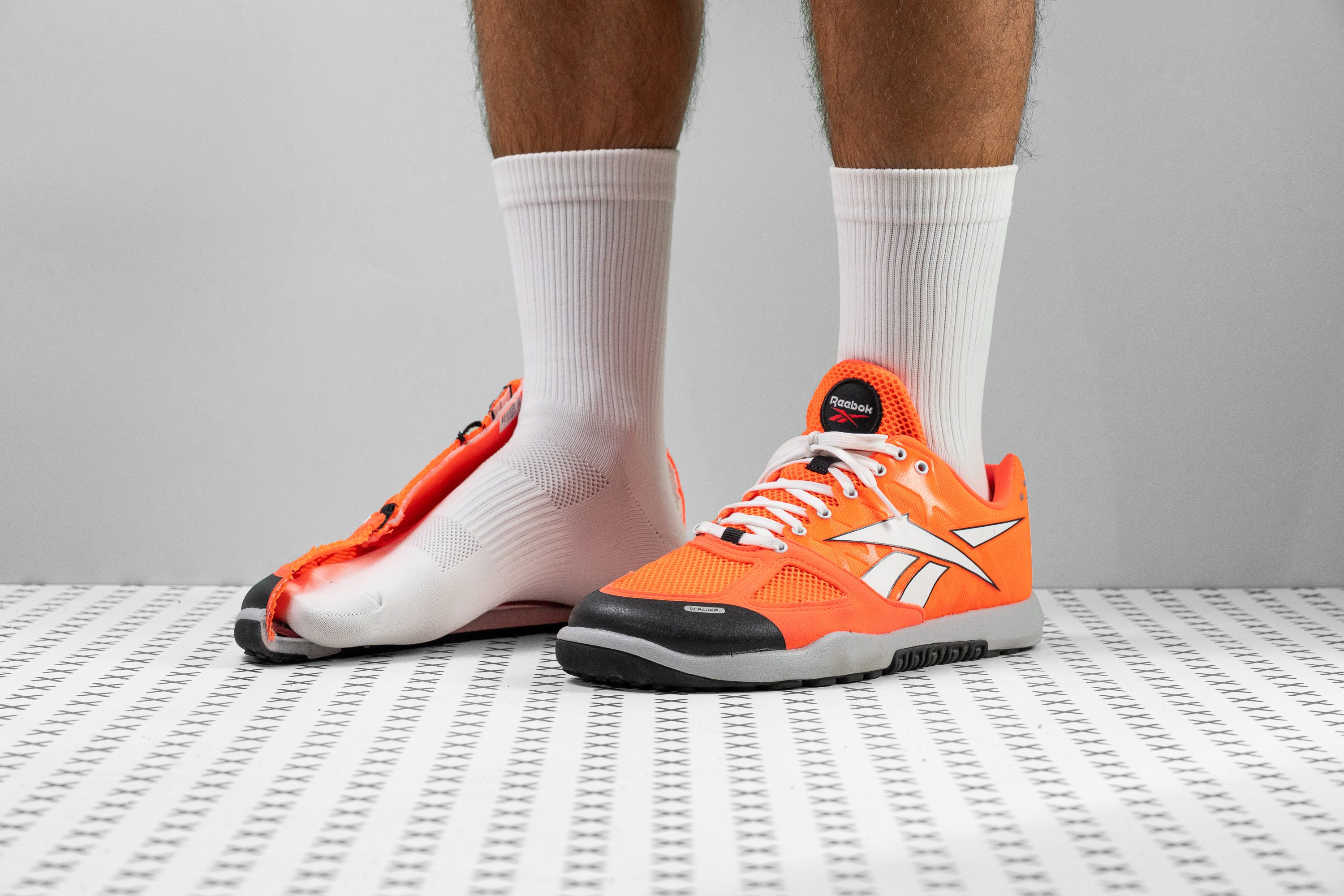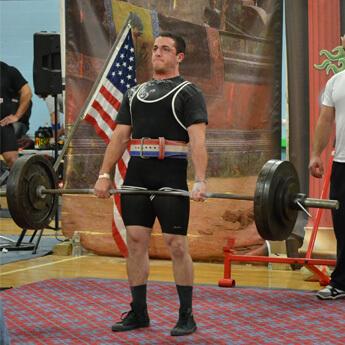Our verdict
- Top pick in best crossfit shoes
- Top pick in best Reebok training shoes
Pros
- Pleasantly lightweight
- Low-profile and minimal
- Grounded platform
- Highly breathable
- Very flexible
- Spacious toebox
- Good outsole traction
Cons
- Lacks cushioning for jumps and runs
- Upper is not durable
- Tongue slips
Audience verdict
- Top 16% in training shoes
- Top 25% in Reebok training shoes
Comparison
The most similar training shoes compared
+ + Add a shoe | |||||
|---|---|---|---|---|---|
| Audience score | 91 Great! | 82 Good! | 87 Great! | 96 Superb! | |
| Price | $120 | $150 | $130 | $129 | |
| Use | CrossfitWorkoutCross-trainingGymHIIT | CrossfitWorkoutCross-trainingGymHIITJumping rope | CrossfitWorkoutCross-trainingGymHIITJumping ropeAll sports | CrossfitWorkoutCross-trainingGymHIITJumping rope | |
| Shock absorption | Low | Low | - | Low | |
| Energy return | Low | High | - | Moderate | |
| Traction | Low | Moderate | - | Moderate | |
| Drop lab | 2.8 mm | 7.7 mm | 4.8 mm | 3.7 mm | |
| Heel stack lab | 18.1 mm | 22.9 mm | 22.3 mm | 18.6 mm | |
| Forefoot | 15.3 mm | 15.2 mm | 17.5 mm | 14.9 mm | |
| Weight lab | 10.1 oz / 286g | 12.1 oz / 342g | 12.3 oz / 350g | 10.4 oz / 294g | |
| Lightweight | ✓ | ✗ | ✗ | ✓ | |
| Breathability | Breathable | Breathable | Moderate | Warm | |
| Width / fit | Narrow | Medium | Narrow | Narrow | |
| Toebox width | Wide | Medium | Medium | - | |
| Size | True to size | True to size | Slightly large | Slightly small | |
| Midsole softness | Firm | Balanced | Balanced | Firm | |
| Stiffness | Flexible | Moderate | Stiff | Moderate | |
| Torsional rigidity | Flexible | Flexible | Stiff | Flexible | |
| Heel counter stiffness | Flexible | Moderate | Moderate | Flexible | |
| Toebox durability | Bad | Bad | Good | - | |
| Heel padding durability | Bad | Decent | Bad | - | |
| Outsole durability | Decent | - | Decent | - | |
| Midsole width - forefoot | Average | Average | Average | Very narrow | |
| Midsole width - heel | Narrow | Average | Average | Narrow | |
| Widths available | Normal | Normal | Normal | Normal | |
| Insole thickness | Average | Average | Average | ||
| Outsole thickness | Very thick | Thick | Average | Thick | |
| Outsole hardness | Average | Average | Average | Average | |
| Heel tab | None | None | Finger loop | None | |
| Tongue: gusset type | None | Both sides (full) | None | None | |
| Tongue padding | Average | Very thin | Average | Thin | |
| Ranking | #5 Top 16% | #26 Bottom 21% | #15 Top 46% | #1 Top 4% | |
| Popularity | #32 Bottom 3% | #20 Bottom 39% | #25 Bottom 24% | #16 Top 49% |
Who should buy
If you aren't a fan of the OG Nano 2.0 already, we believe that this throwback Reebok trainer will make you fall in love with it if:
- you need a pair of highly versatile cross-trainers
- you prefer very low-profile shoes (both stack and drop)
- you want Crossfit shoes that are lighter than average

Who should NOT buy
This shoe is great for a little bit of everything but it is not geared toward any specific training regimen. So, if you do lots of heavy lifting, we recommend getting the dedicated Reebok Legacy Lifter instead. Or a Nike Metcon 8, if you prefer a low-drop trainer.
The Nano 2.0 also falls short of cushioning for high-impact workouts with lots of jumping and running. The Reebok Nano X3 is more suitable for that.

Cushioning
Shock absorption
Crossfitters loved the simplicity and low profile of the original Nano 2.0 so much that their popular demand convinced Reebok to bring the shoe back from the dead.
Showing some of the lowest shock absorption readings among training shoes (59 SA in the heel and 49 SA in the forefoot), the shoe's grounded sole and minimal cushioning made the Reebok Nano 2.0 highly versatile in the early days of Crossfit.
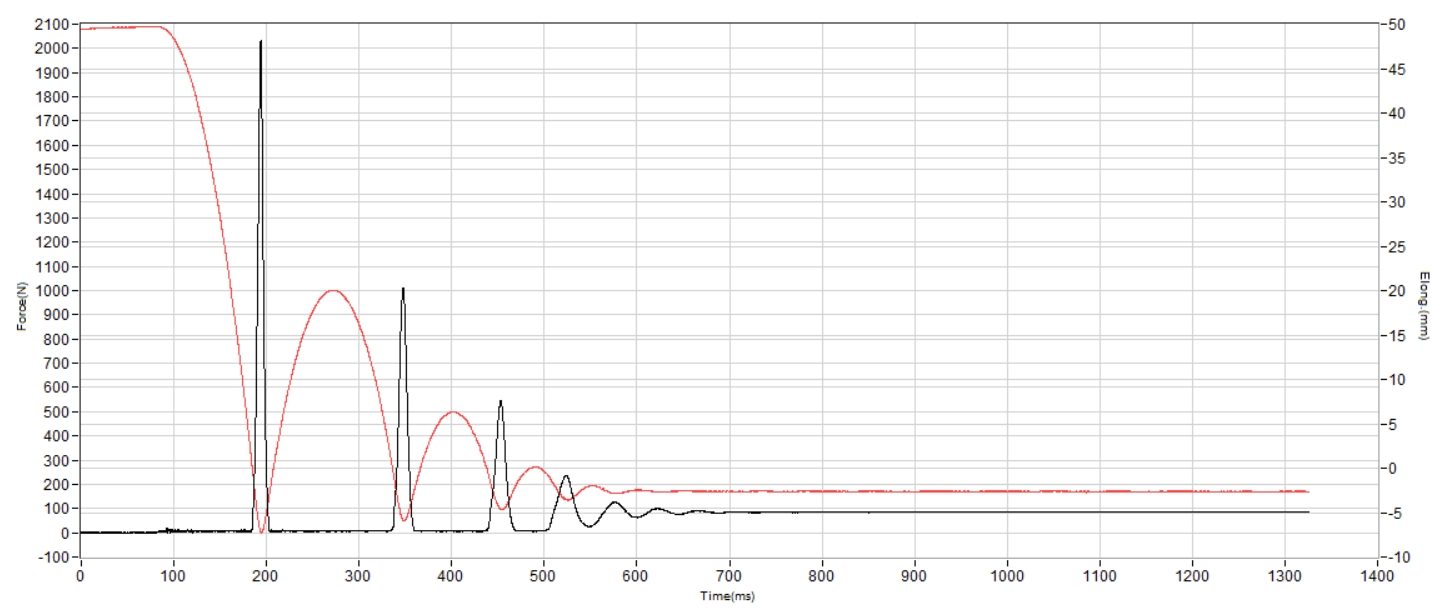
| Nano 2.0 | 59 SA |
| Average | 81 SA |
Energy return
Unlike the more advanced and technology-packed Reebok Nanos of today, the Nano 2.0 offers an extremely flat, static, and unresponsive platform. Our energy return measurements showed exceptionally low readings of 45.8% in the heel and 45.5% in the forefoot.
| Nano 2.0 | 45.8% |
| Average | 55.3% |
Heel stack
The Reebok Nano 2.0 is one of the most grounded trainers in our catalog. It is only a little taller than minimalist shoes.
Using a caliper, we measured the shoe's heel stack at 18.1 mm, which is a whole 6.5 mm thinner than the average!
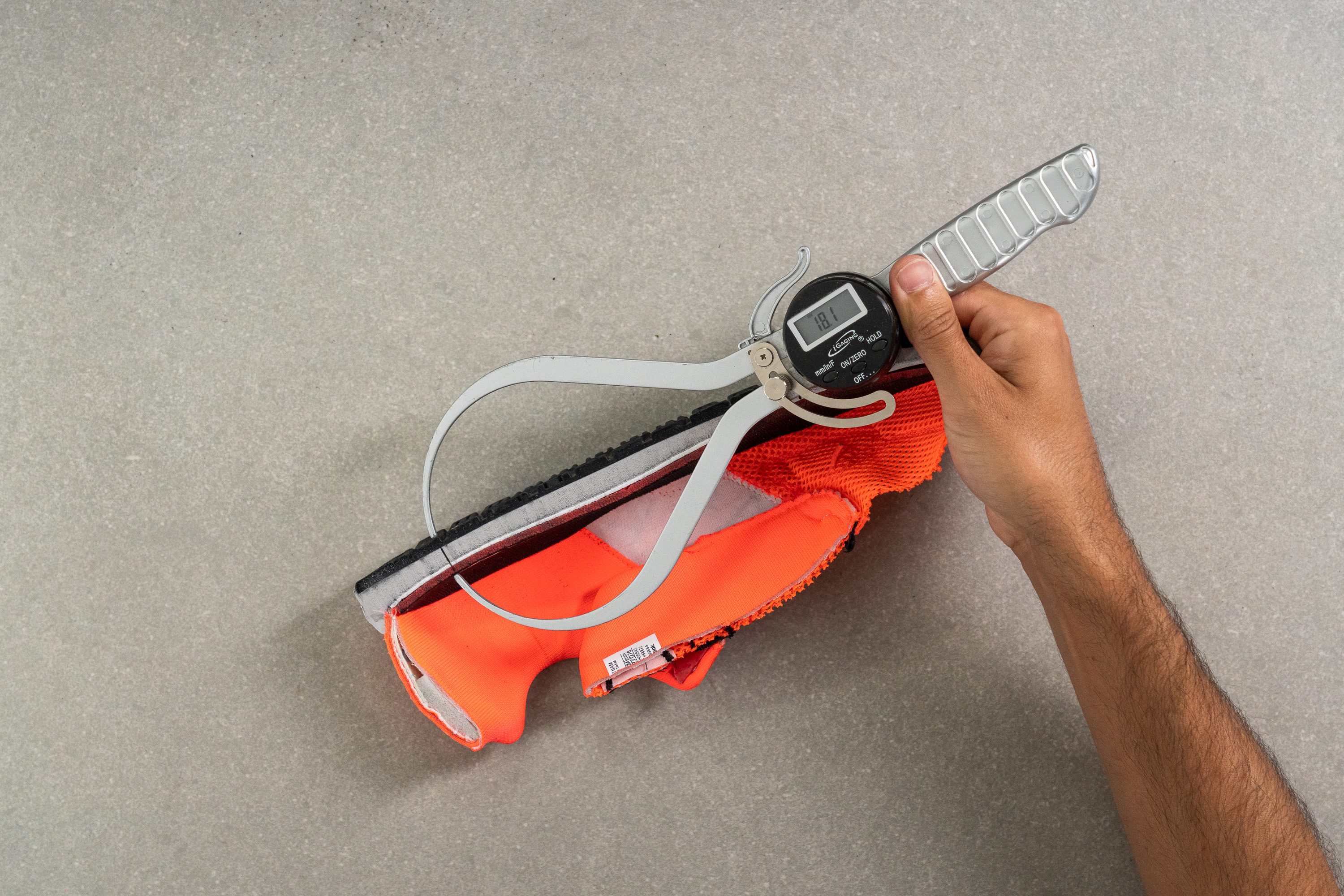
If you are willing to skip cushioning in favor of that direct contact with the ground, the Nano 2.0 is an excellent option.
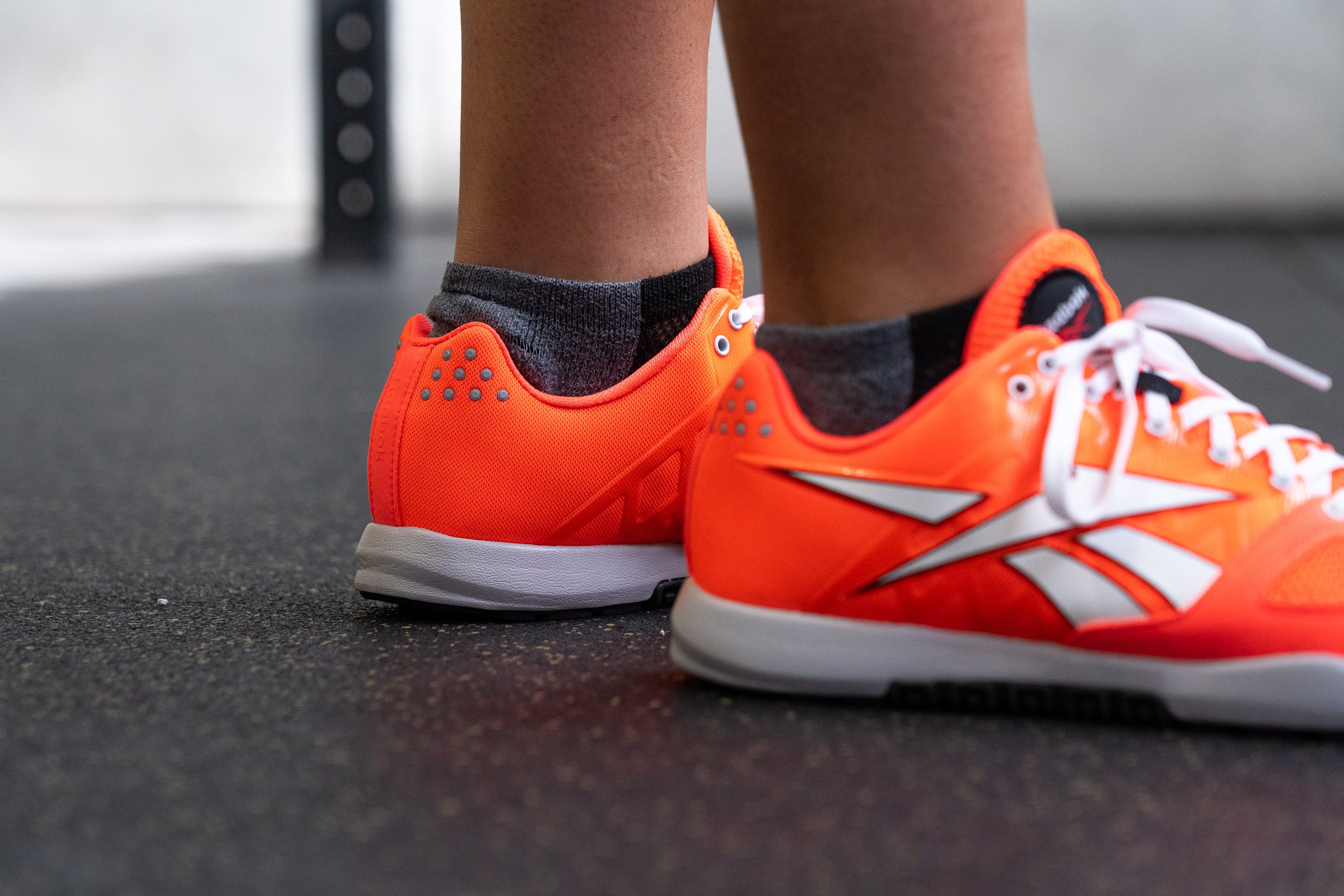
| Nano 2.0 | 18.1 mm |
| Average | 24.6 mm |
Forefoot stack
It is no surprise that the shoe gets even lower in the forefoot. With a caliper measurement of 15.3 mm, it is 3 mm lower than the average.

This is perfect for fast-paced movements and whenever you need to be precise with your footwork.
| Nano 2.0 | 15.3 mm |
| Average | 18.2 mm |
Drop
As a result of its low stack height, the heel-to-toe drop of the shoe is also pretty low.
Contrary to the officially claimed 4 mm, we actually found it to be 2.8 mm! This is weird because we normally find the drop to be higher than stated.
But this is still good news for those who seek a more natural foot placement inside a shoe. It is a very different experience from the well-cushioned Nano X3, with a drop of 7.6 mm and a stack height of 27 mm/19.4 mm.
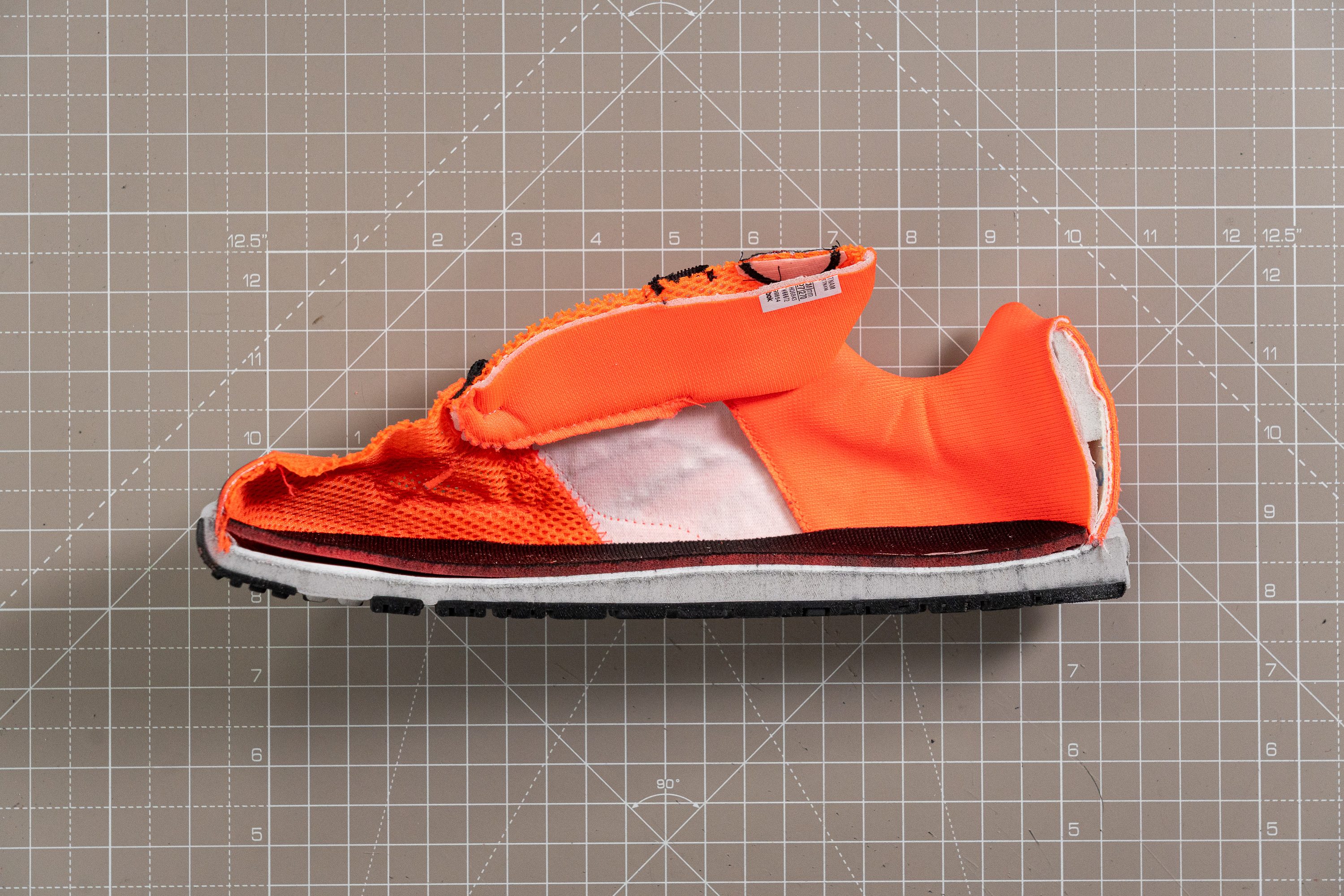
| Nano 2.0 | 2.8 mm |
| Average | 6.3 mm |
Midsole softness
In addition to being a very low-profile shoe, the Nano 2.0 also has a pretty firm platform.
Our durometer returned 31 HA which is 15% firmer than training shoes on average.
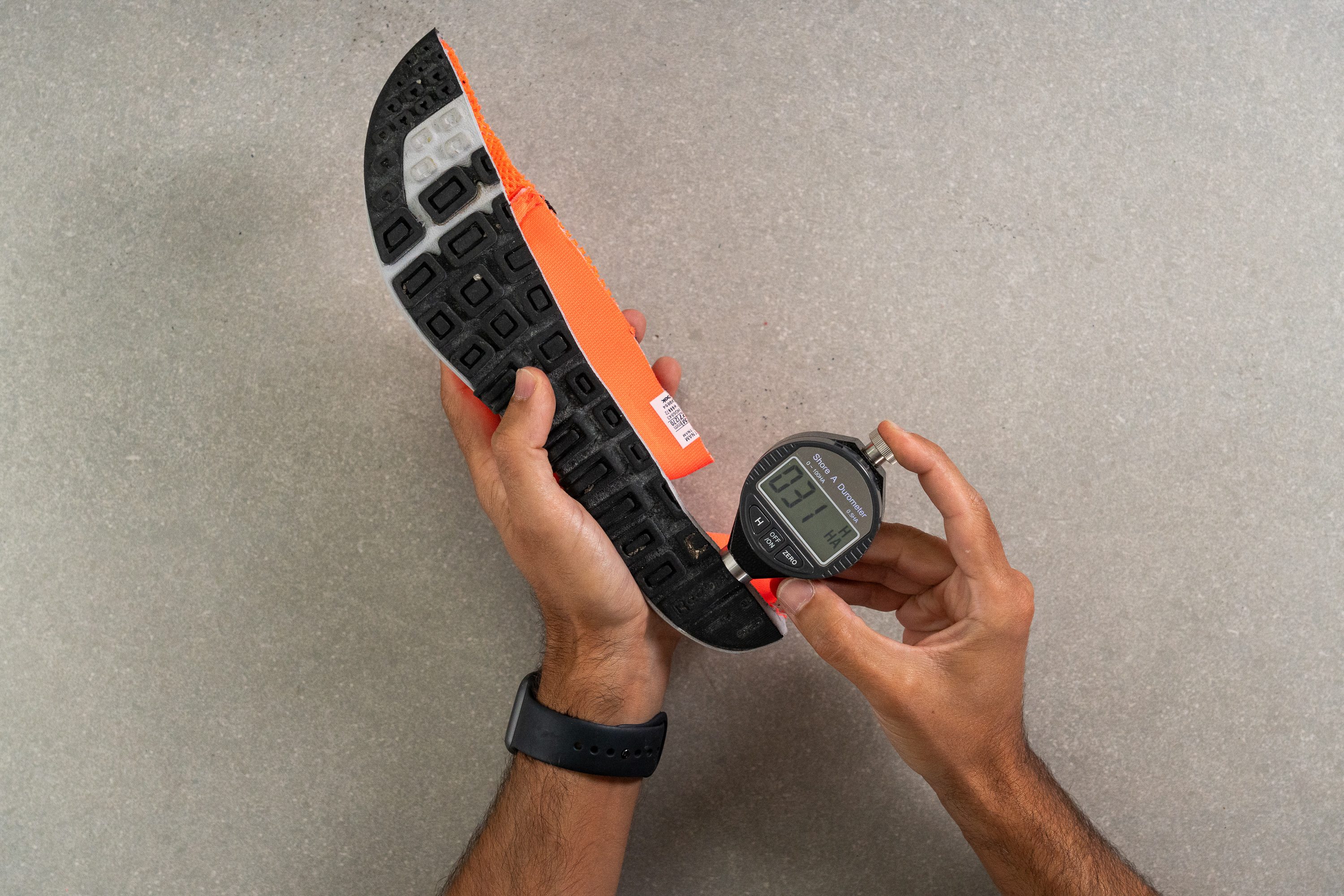
This definitely helped us feel more planted in the trainer. No squish whatsoever!
| Nano 2.0 | 31.0 HA |
| Average | 27.8 HA |
Size and fit
Size
Reebok Nano 2.0 fits true to size (20 votes).
Toebox width - widest part
Wide footers are sure to love all the toebox space provided by the Reebok Nano 2.0.
In the widest part, the forefoot has a fairly average width of 100.8 mm, but when it comes to the toes...
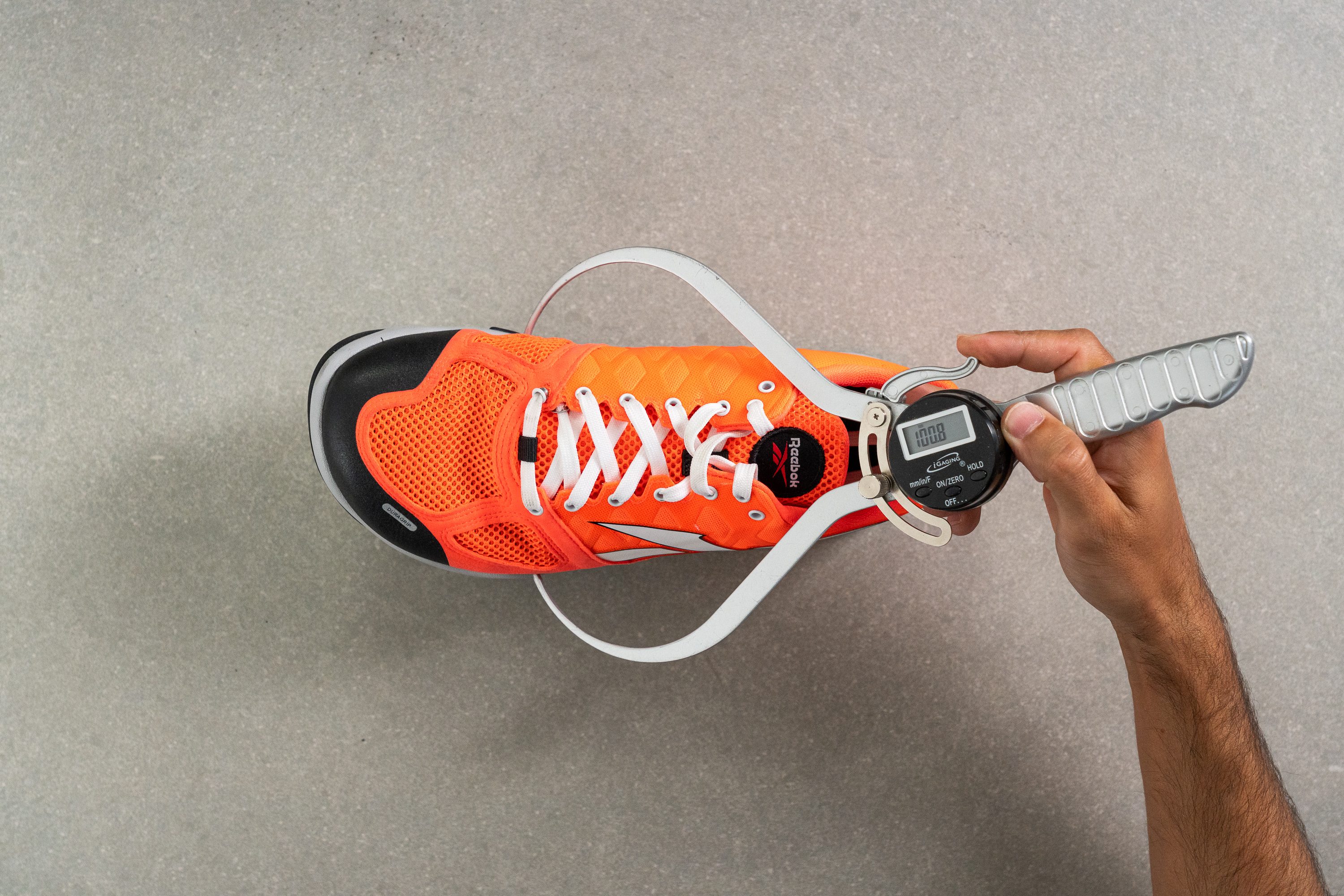
This test follows an older methodology, which is why you don't see recently tested shoes in the chart. Results from different methodologies can not be compared.
| Nano 2.0 | 100.8 mm |
| Average | 100.5 mm |
Toebox width - big toe
...it looks like a shoe from Altra!
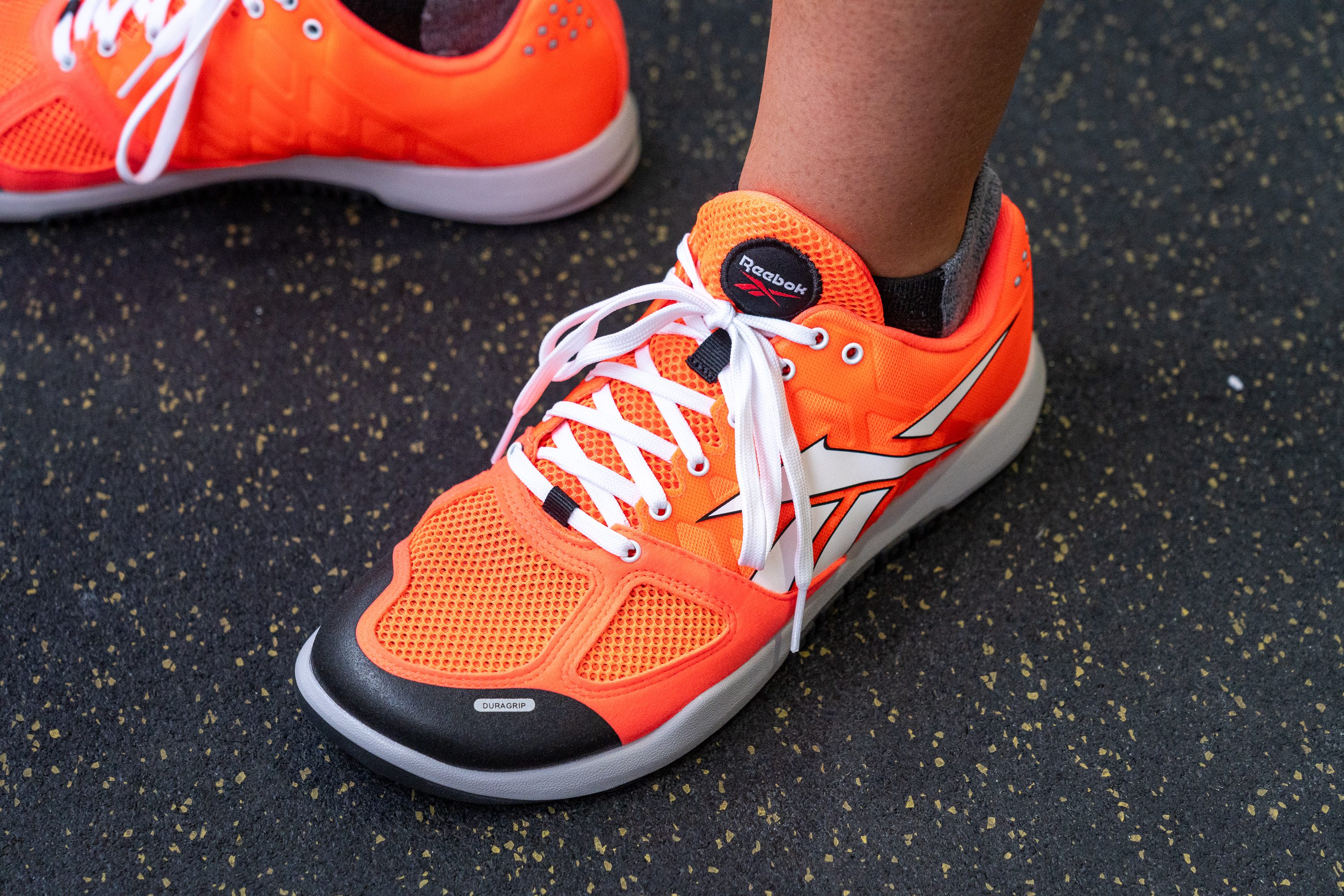
Measuring the width at the big-toe mark, we get a whopping 87.5 mm! This is mind-blowingly wide, even for a cross-training shoe.
But for our average-width feet, this was not a problem and we enjoyed the extra space. Narrow-footed folks, on the other hand, should probably get half-a-size smaller or consider a more traditionally-fitting shoe.
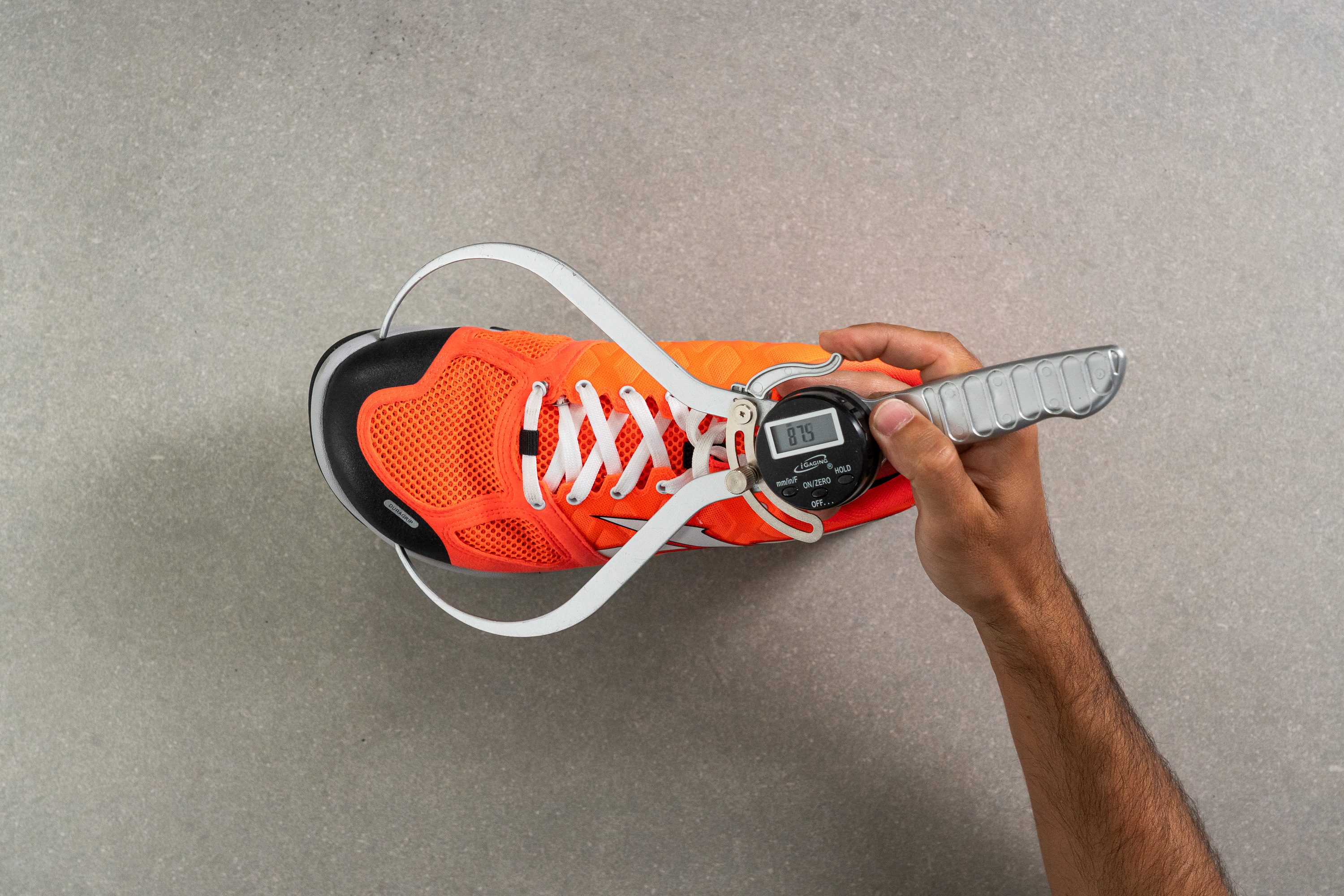
This test follows an older methodology, which is why you don't see recently tested shoes in the chart. Results from different methodologies can not be compared.
| Nano 2.0 | 87.5 mm |
| Average | 78.8 mm |
Traction / Grip
Traction test
Some may find the shoe's traction pattern a little funny and dated, but it does its job well!
Having tested the Nano 2.0's stopping power in the forefoot, we recorded its friction score at 0.30. This is a solid result for a cross-training shoe outsole offering a reliable grip on rubber, concrete, and wooden gym floors as well as on plywood boxes (for box jumps). Even if all those happen to be a little dusty or wet from sweat.
| Nano 2.0 | 0.30 |
| Average | 0.33 |
Outsole design
Square and rectangular lugs cover the Nano 2.0's entire outsole but have plenty of space in between them to keep the trainer as flexible as possible.
Small bits of outsole rubber also extend up the white midsole to form the RopePro - a special element for grip and shoe protection during rope climbs.
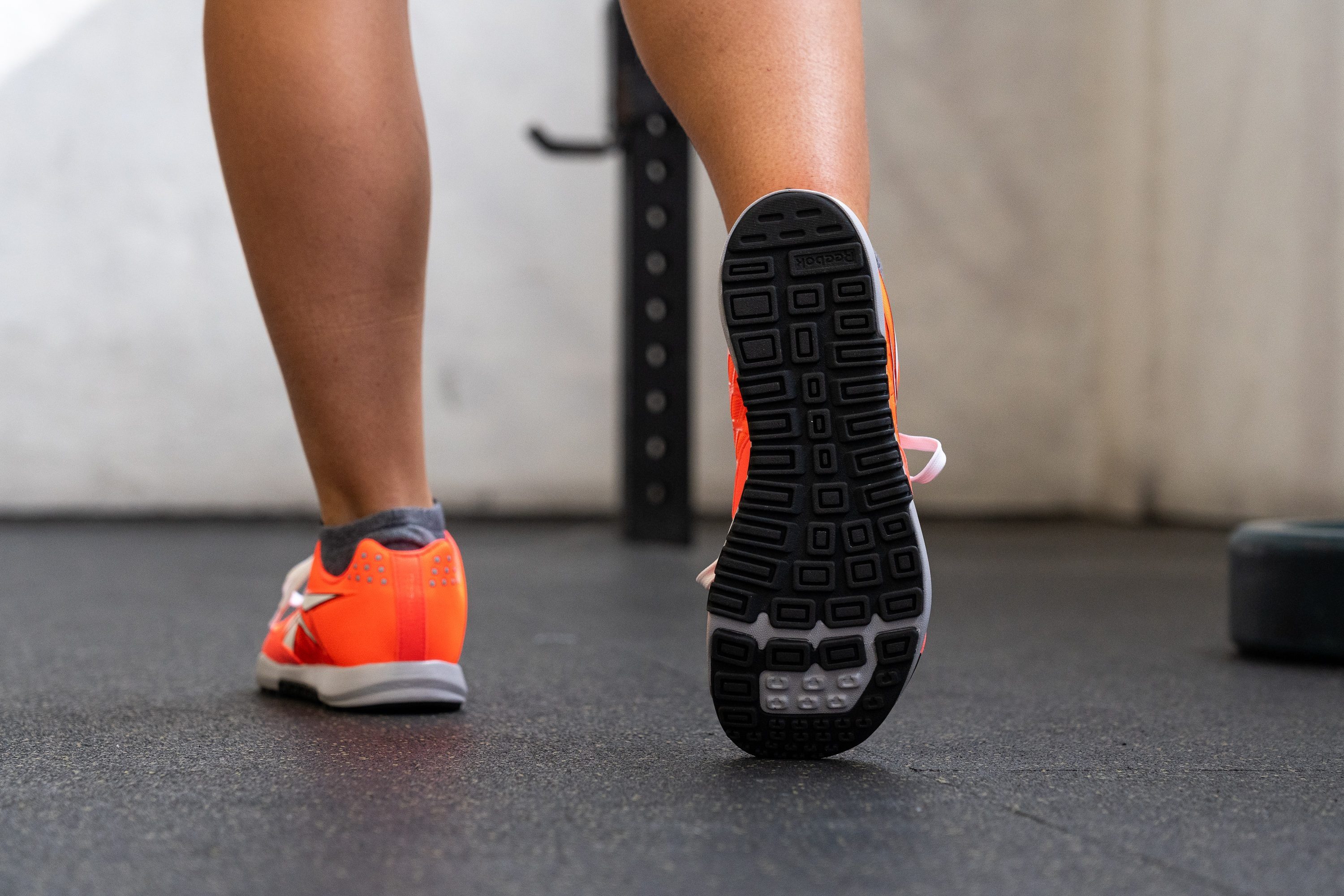
Flexibility / Stiffness
The Reebok Nano 2.0 is a very pliable trainer.
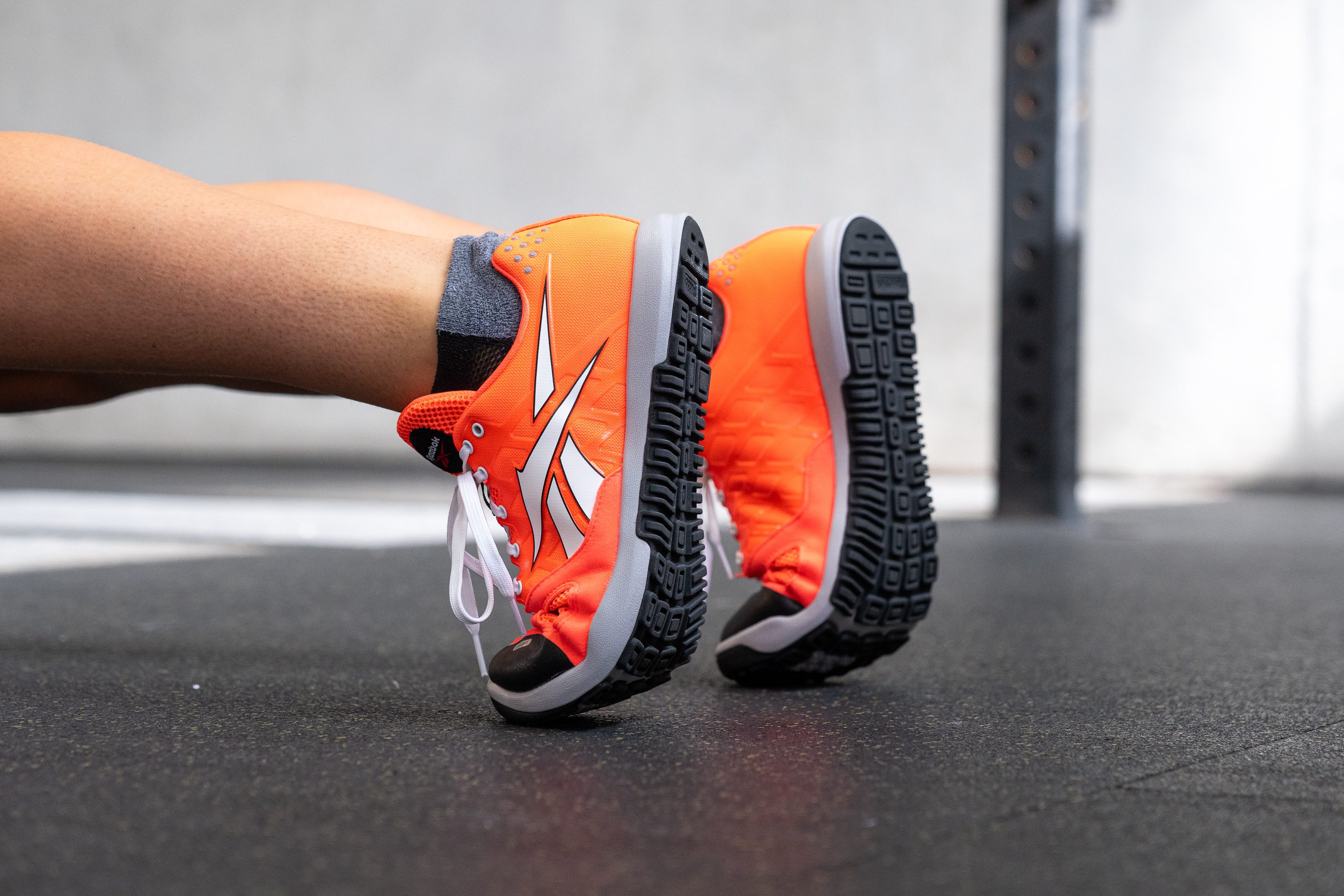
We saw that in a manual test earlier and confirmed it in a lab test with a shoe flexing tester. It hardly takes any force (6.0N) to bend this shoe to a 30-degree angle! That makes it one of the most pliable cross-trainers you can ever get.

| Nano 2.0 | 6.0N |
| Average | 10.1N |
Weight
Working out in the Nano 2.0 is such a delight! Being used to the fact that high-end cross-trainers nowadays weigh around 12-12.5 oz, the 10.1-ounce Nano 2.0 feels like a break for the feet.
Weighing the shoe is a men's US size 9, we found that it is a whole ounce lighter than cross-training shoes on average.

| Nano 2.0 | 10.1 oz (286g) |
| Average | 10.8 oz (306g) |
Breathability
The Reebok Nano 2.0 is exceptionally airy.
We used a machine that pumps smoke to test the shoe's ventilation capacity. As you can see from the video below, the smoke flies right through the material in a matter of seconds. On a 1-5 scale, where 5 is the most breathable, we rated the shoe's breathability as 5.
The shoe's got that old-fashioned type of mesh with huge ventilation pores. From the light test below, it is clear to see how it gets to be so breathable.
We also used a microscope to have a look at these gigantic pores up close. Even though you don't even need a microscope to see them.
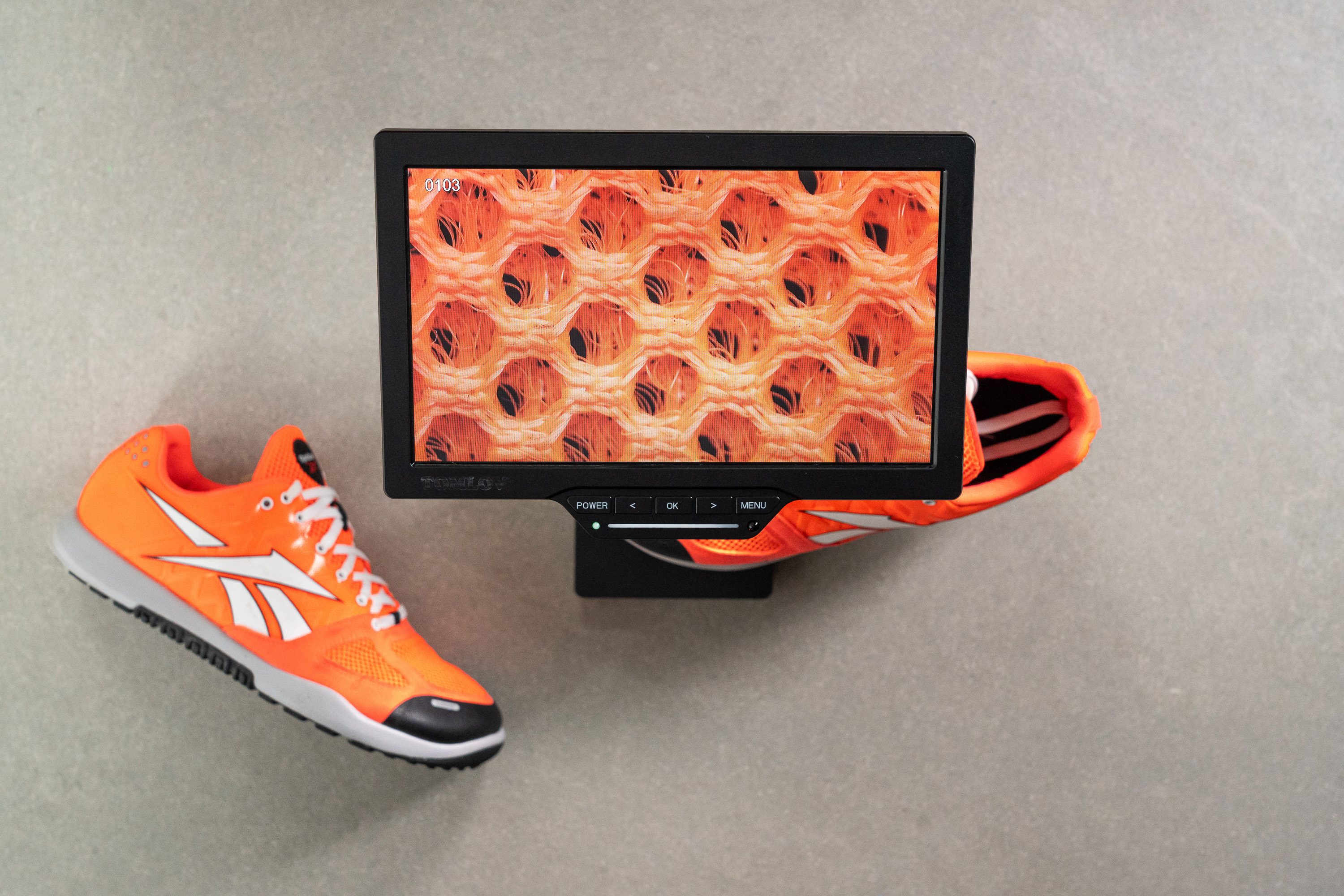
| Nano 2.0 | 5 |
| Average | 3.6 |
Stability
Lateral stability test
From what we've seen in the cushioning section, it is pretty evident how the Reebok Nano 2.0 gets to be so stable. A firm platform that puts your feet very close to the ground simply couldn't be any other way.
Torsional rigidity
Even the fact that the Nano 2.0 is incredibly flexible doesn't detract from its stability. We rated its torsional rigidity as the most flexible (1 out of 5) but we can still recommend it to people with pronation issues because of its firm and minimal sole.
| Nano 2.0 | 1 |
| Average | 2.8 |
Heel counter stiffness
The heel counter is not very stiff either. On a 1 to 5 scale, where 5 is the stiffest, we rated it as 2.
The collar wraps around the ankle softly, allowing it to control the movement and not the other way around.
| Nano 2.0 | 2 |
| Average | 2.7 |
Midsole width - forefoot
The Reebok Nano 2.0 has a nice and wide forefoot. Measuring the widest part of the sole, our caliper returned 110 mm. This is pretty standard for a cross-training shoe.
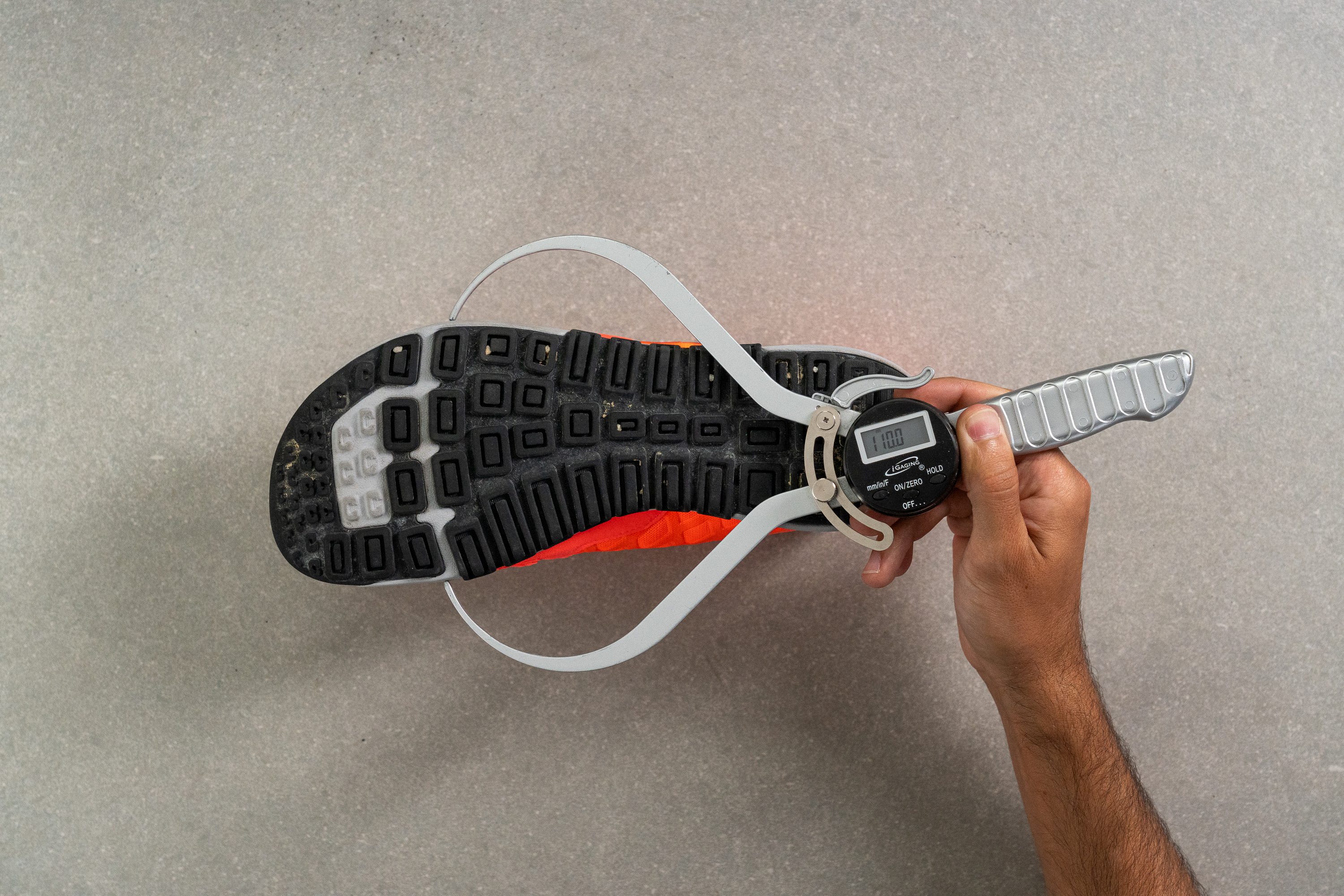
| Nano 2.0 | 110.0 mm |
| Average | 110.8 mm |
Midsole width - heel
It was surprising to find that the shoe's heel is only 79.8 mm in its widest part. It is significantly narrower than the average 87 mm!
It does help to keep the shoe light and maneuverable though.

| Nano 2.0 | 79.8 mm |
| Average | 87.1 mm |
Durability
Toebox durability
To our great disappointment, that same airy mesh fails miserably in the durability department. A touch of Dremel destroyed the fabric in just a couple of seconds, bringing the toebox durability rating to the lowest possible (1 out of 5).
At least there is a Duragrip layer around the toes that offers some protection.
In the comparison photo below, we can see how far the Nano has gone in its durability over the years.
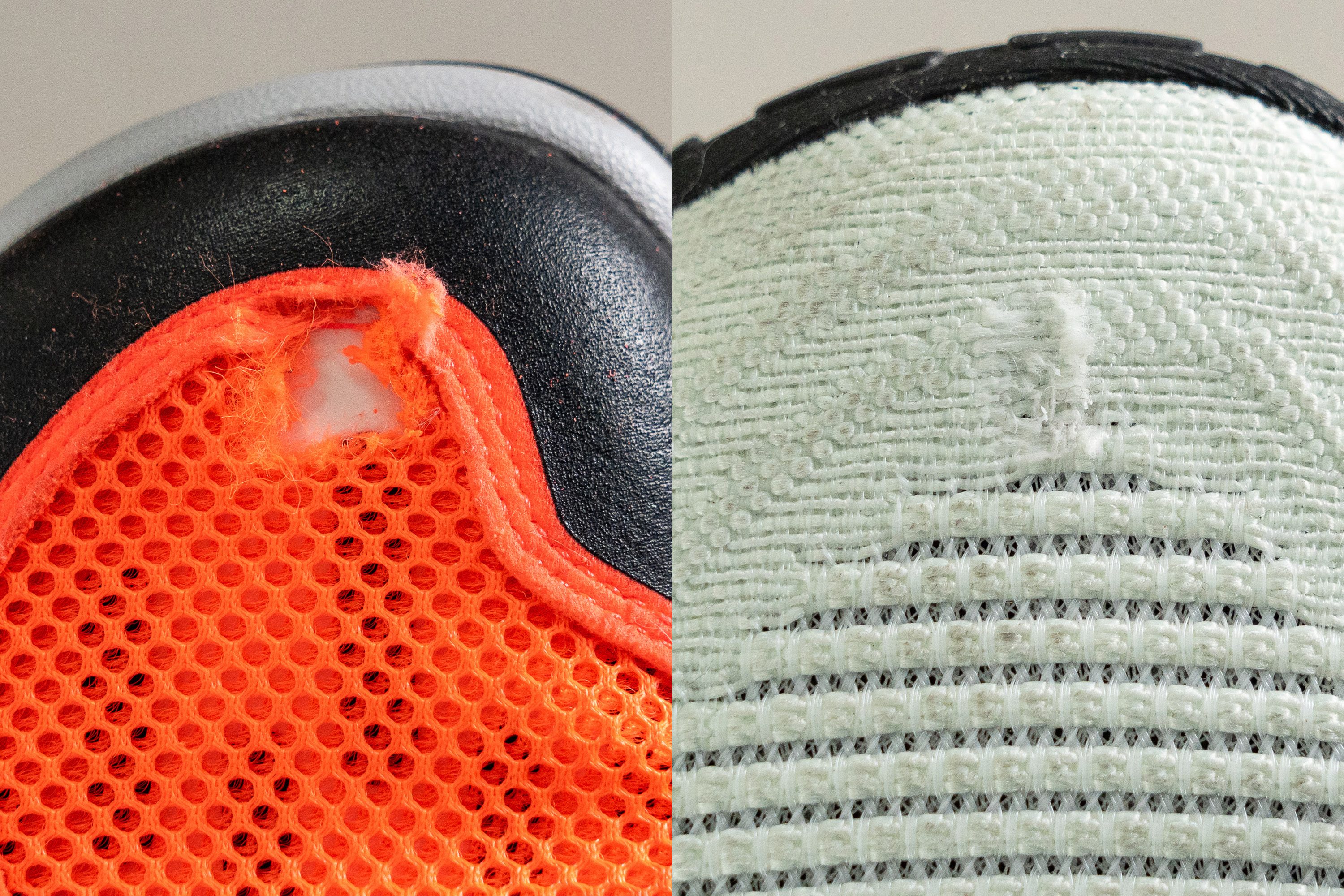
| Nano 2.0 | 1 |
| Average | 2.5 |
Heel padding durability
The back portion of the collar also failed to demonstrate its wear resistance.
After a mere 4 seconds, the heel padding got torn completely. Yet again, the shoe gets the lowest durability score of 1.
| Nano 2.0 | 1 |
| Average | 2.7 |
Outsole hardness
The outsole appears to be more promising than the upper but it does not surpass the average of our lab-tested trainers.
Its rubber is of average hardness, showing 82.4 HA on our durometer.
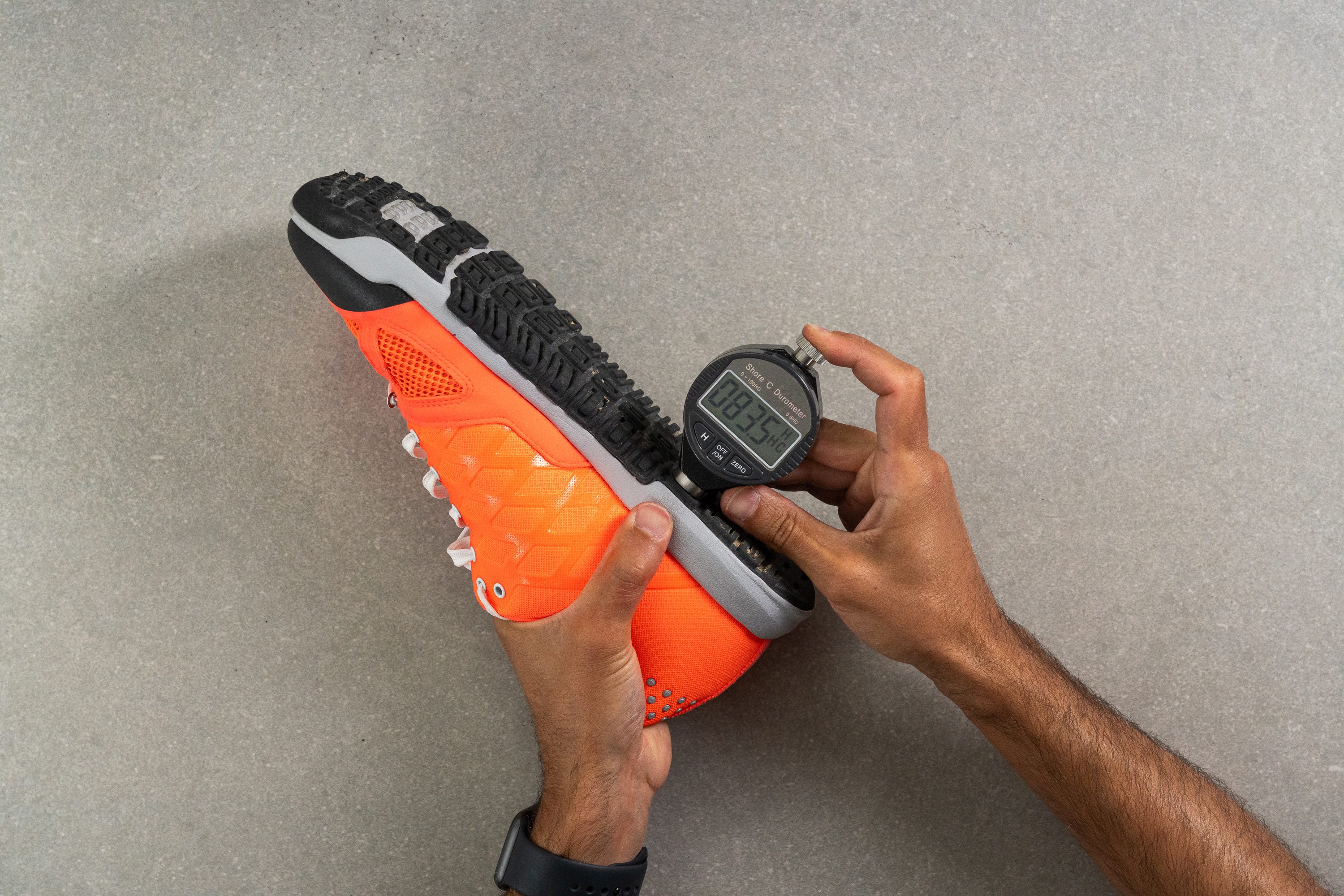
| Nano 2.0 | 82.4 HC |
| Average | 83.3 HC |
Outsole durability
It only takes 22 seconds of our Dremel test to reveal how durable the shoe's outsole is.
To assess the damage caused by the tool, we use a tread gauge. It measures the depth of the dent created. In the Reebok Nano 2.0, it is 1.3 mm deep. This is a tiny bit deeper than the average.
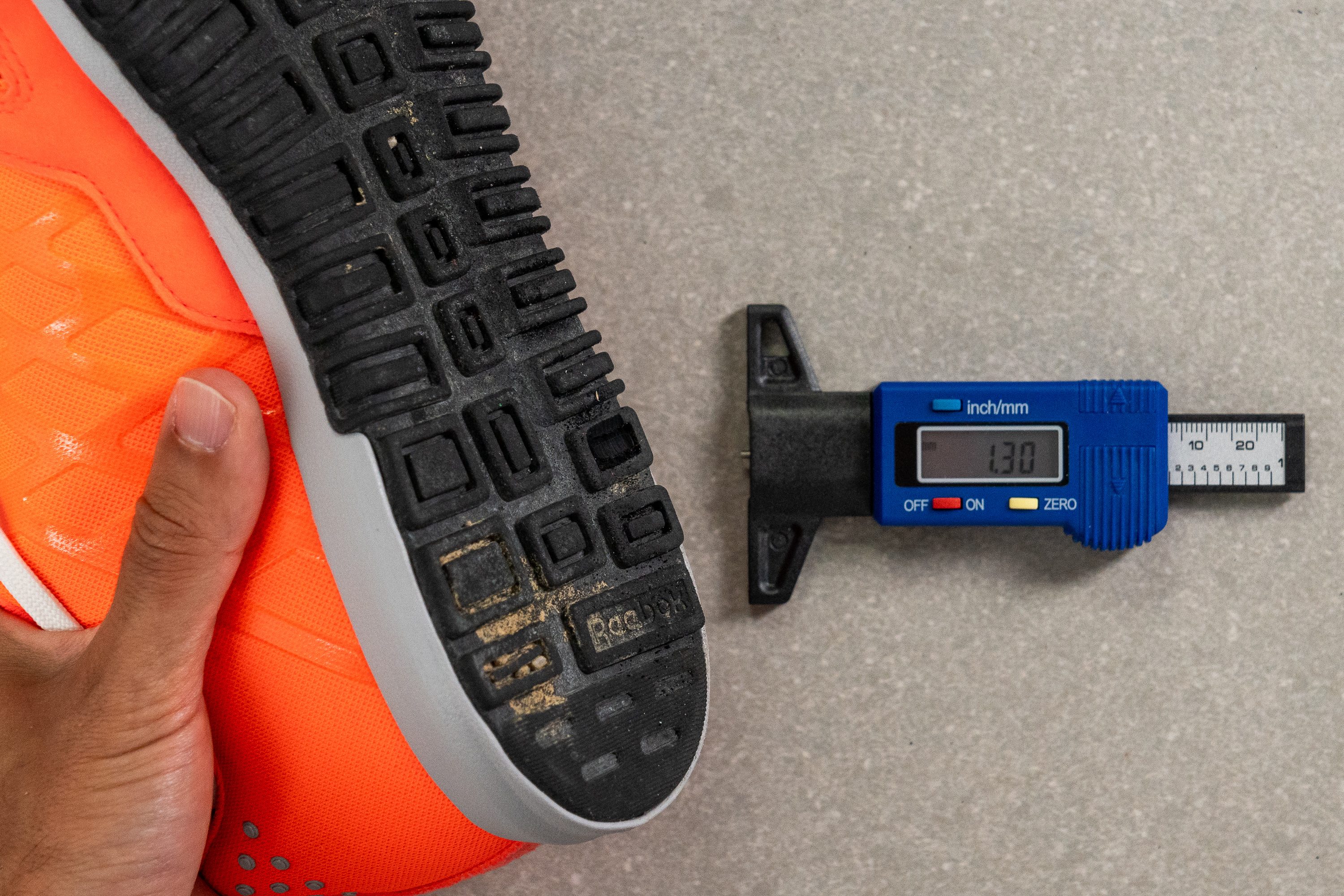
| Nano 2.0 | 1.3 mm |
| Average | 1.1 mm |
Outsole thickness
The good news is that the rubber is pretty thick on the Nano 2.0. Our caliper shows 5.1 mm, which is about a millimeter thicker than average.

Having extra rubber helps to compensate for the lack of hardness as it will take longer to wear it out.
| Nano 2.0 | 5.1 mm |
| Average | 3.6 mm |
Misc
Insole thickness
The Nano 2.0 uses a pretty standard insole. We measured its thickness at 3.1 mm, which is a little thinner than the average.
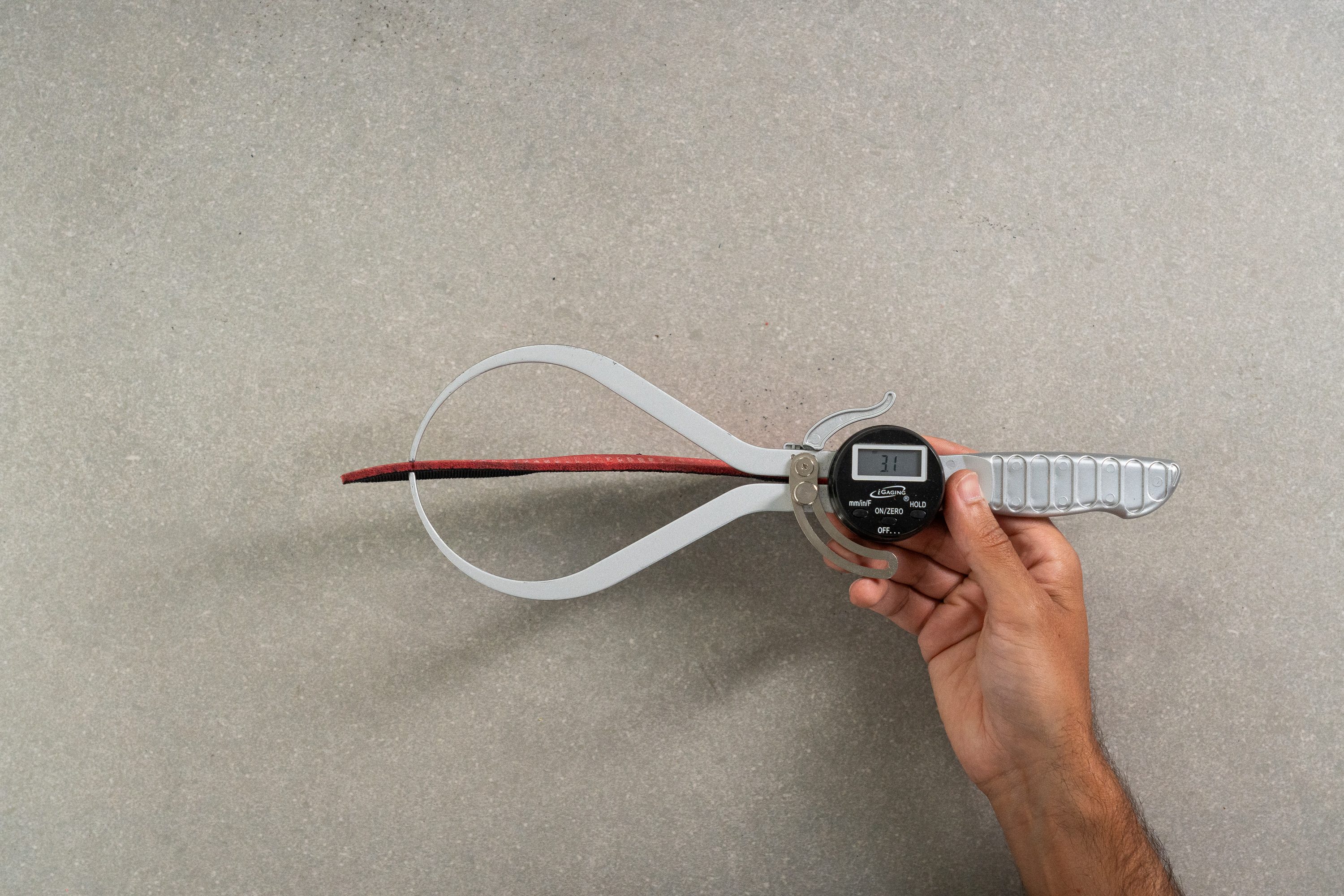
| Nano 2.0 | 3.1 mm |
| Average | 4.0 mm |
Removable insole
Even though it might seem at first that the insole is attached in the Nano 2.0, it is actually removable.

| Nano 2.0 | Yes |
Reflective elements
A cute little bonus - the dots on the heel cup light up in the dark.
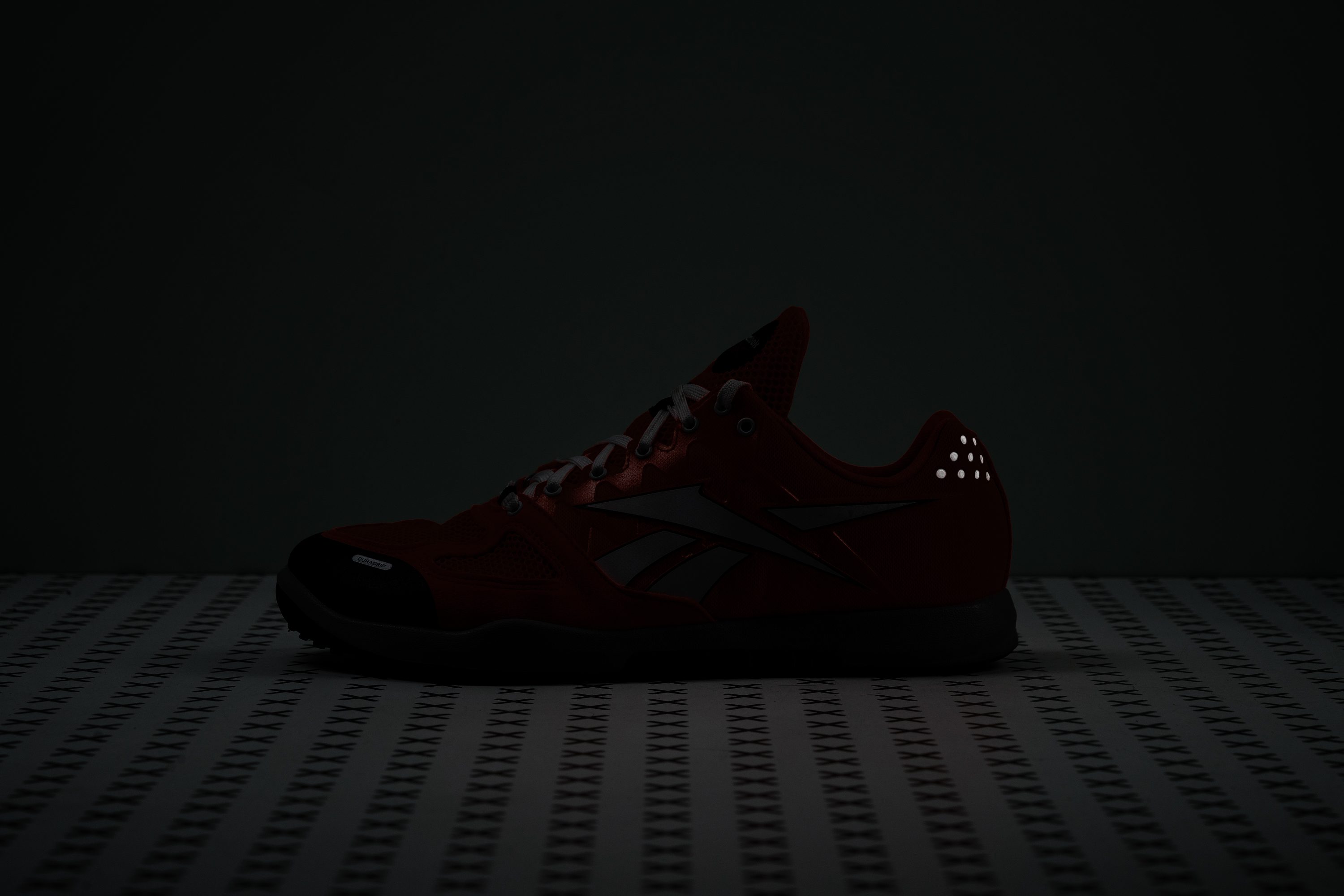
| Nano 2.0 | Yes |
Tongue padding
The Reebok Nano 2.0 has a well-padded interior that doesn't go over the board.
Based on our caliper measurement, the tongue is 5.4 mm thick.
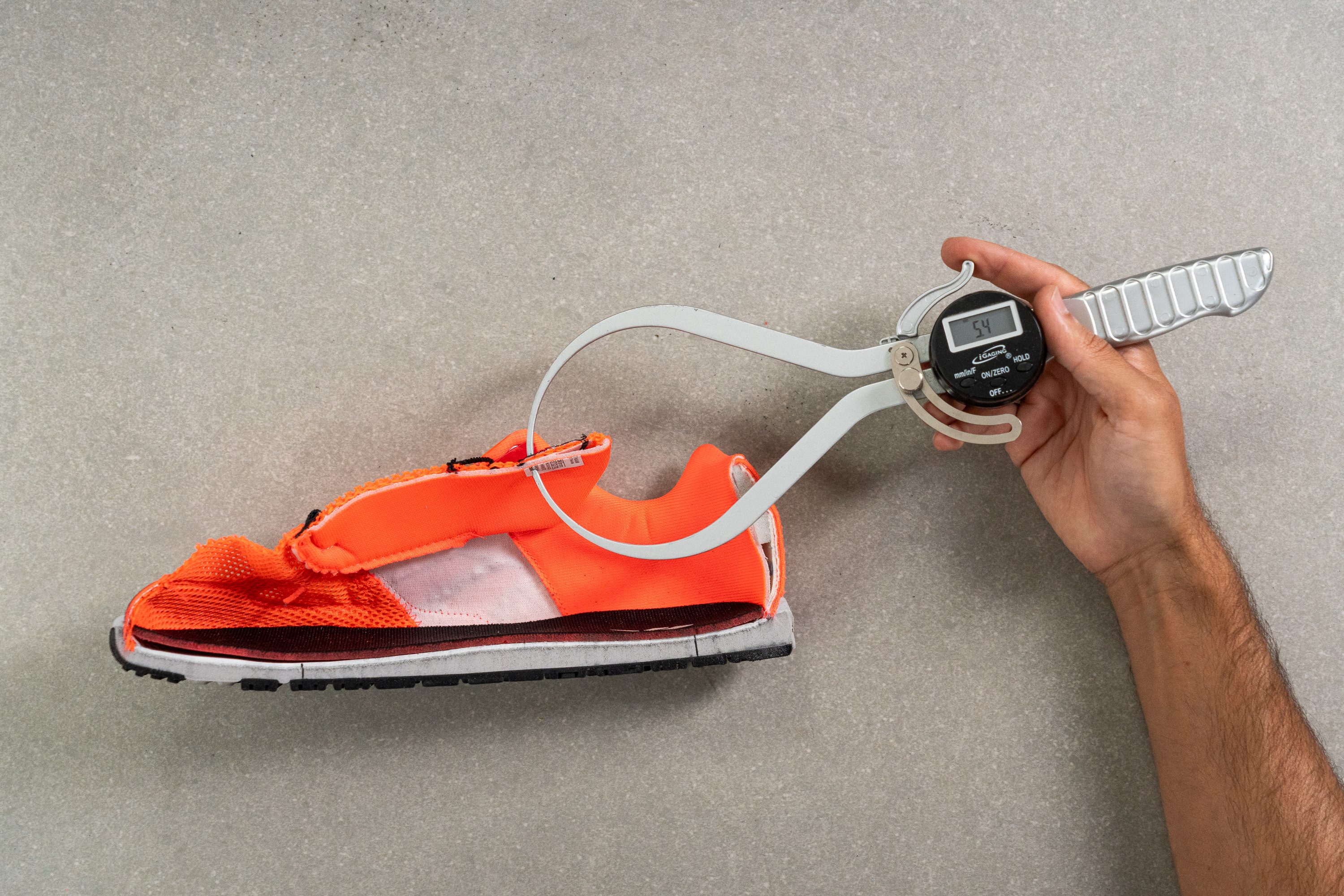
| Nano 2.0 | 5.4 mm |
| Average | 5.5 mm |
Heel tab
There is no heel tab in the Nano 2.0.
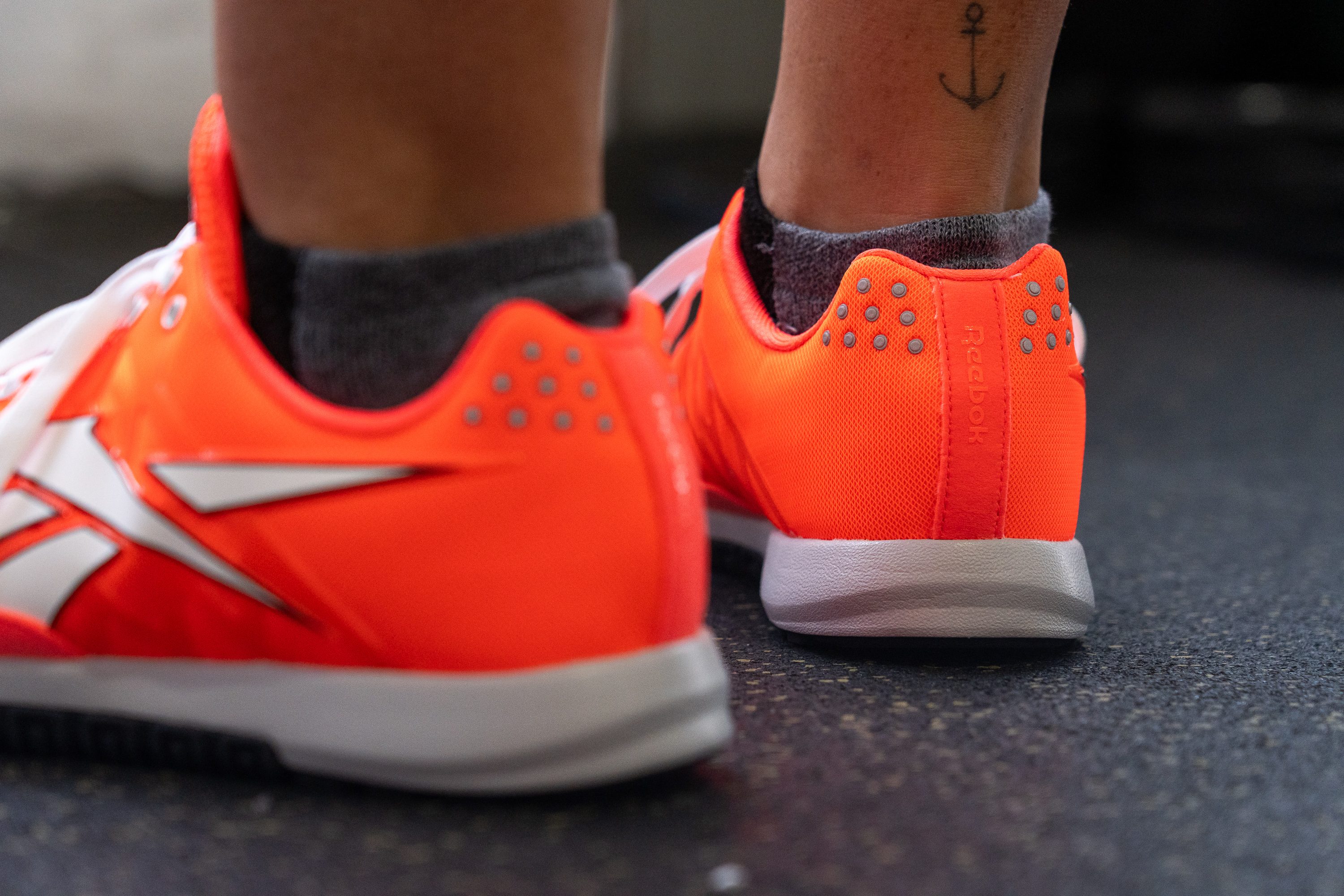
| Nano 2.0 | None |
Tongue: gusset type
Apparently, a gusseted tongue wasn't a thing back in 2012 as the Nano 2.0 features a standard, non-attached one.
We must admit that there is a little bit of tongue sliding in this shoe.
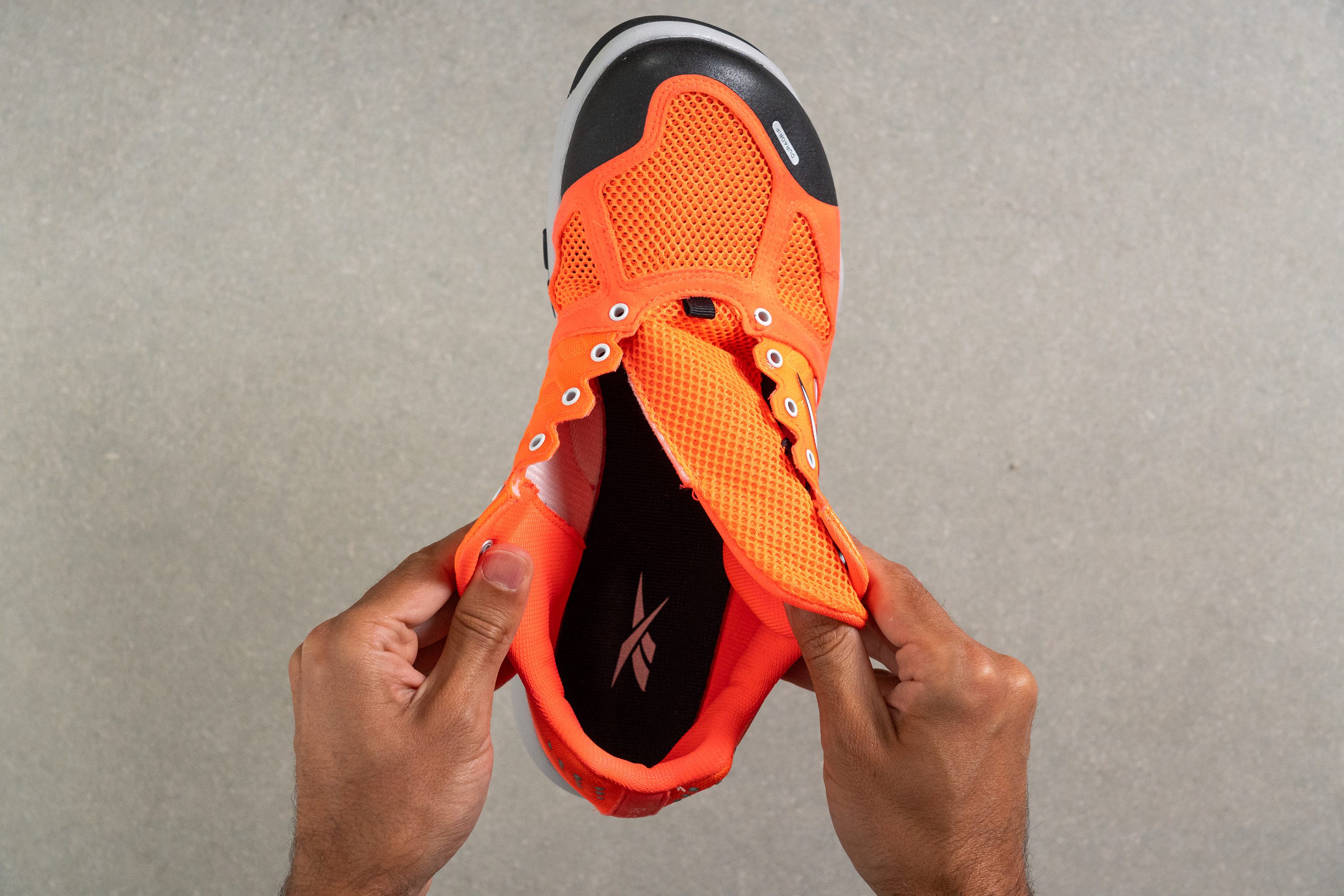
| Nano 2.0 | None |

